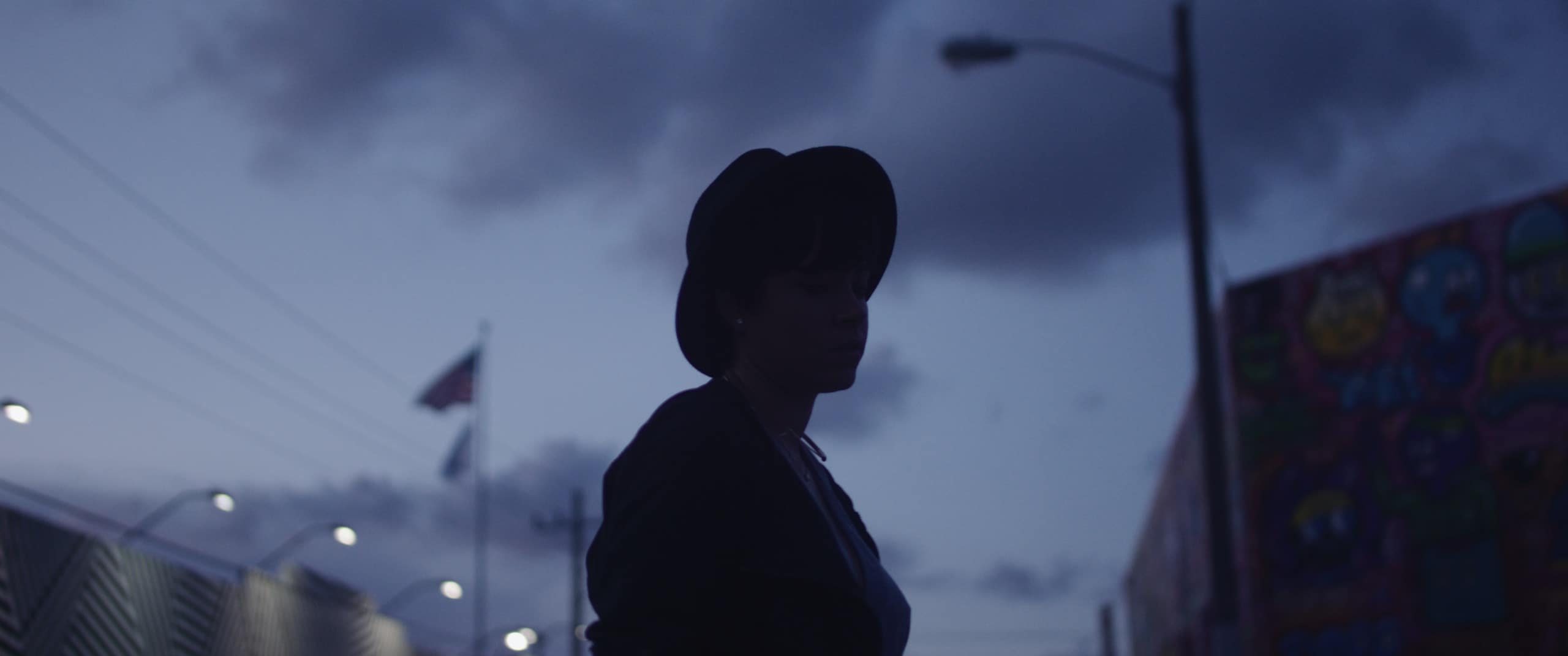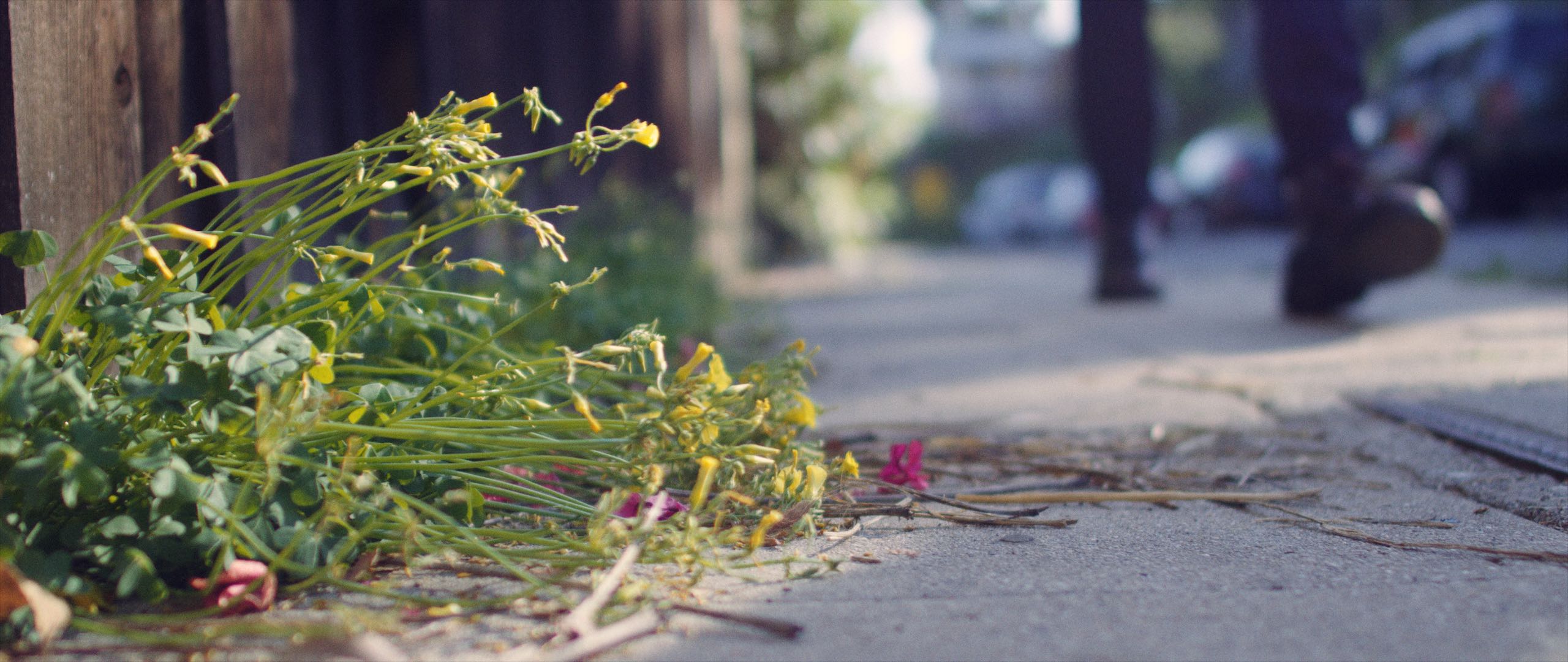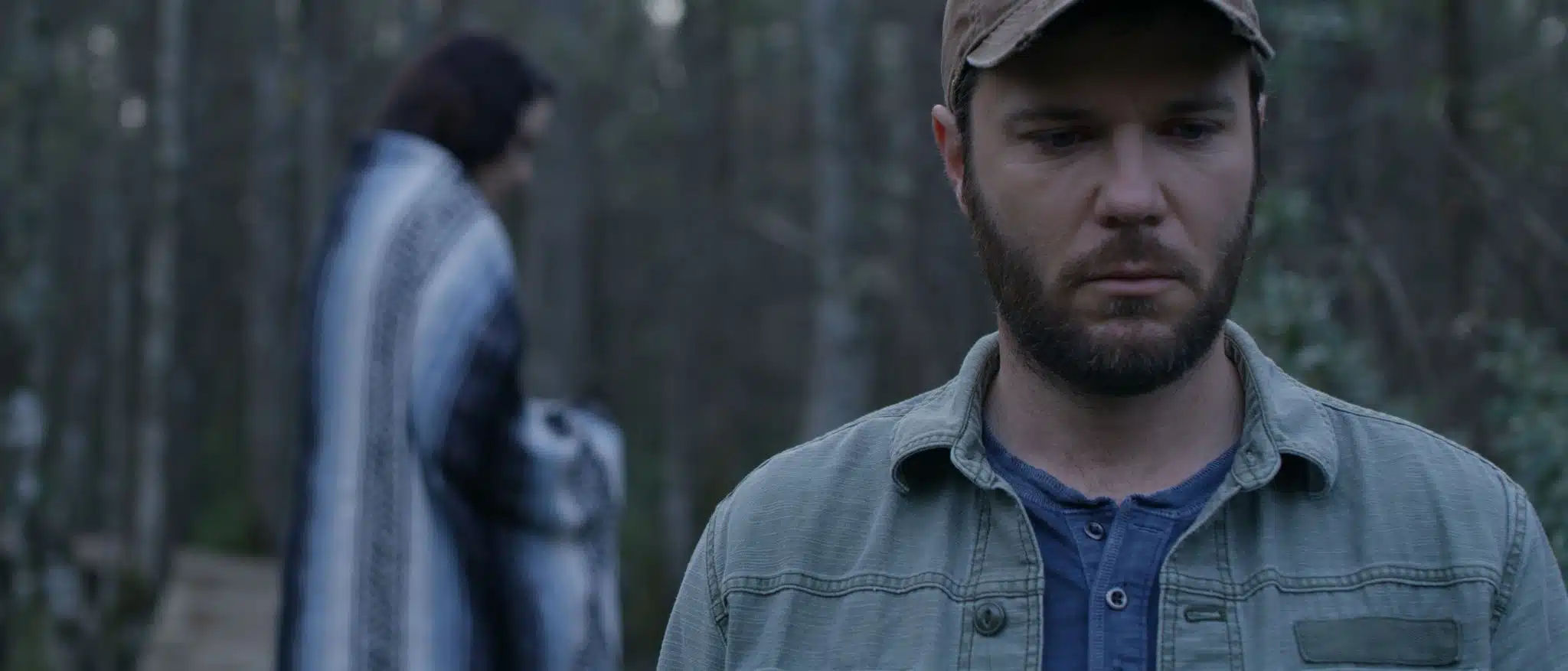In our 12th episode of Do The Impossible, we delve into the dynamic world of OTT marketing, a realm where we shine with unparalleled expertise. Explore how our specialized approach redefines advertising strategies, unlocking new dimensions in reaching and captivating audiences across Over-The-Top platforms.
Index Template
Do The Impossible: EP. 12 | OTT
Do The Impossible, Episode 12: OTT
Do The Impossible: EP. 11 | David and Goliath
Do The Impossible, Episode 11: David and Goliath
Do The Impossible: EP. 10 | Photography is Dead
Do The Impossible, Episode 10: Photography is Dead
Do The Impossible: EP. 9 | Diversity and Inclusion
Do The Impossible, Episode 9: Diversity and Inclusion
Do The Impossible: EP. 8 | Video and Film
Do The Impossible, Episode 8: Video and Film
Do The Impossible: EP. 7 | Music
Do The Impossible, Episode 7: Music
Do The Impossible: EP 6. | Large and Small
Do The Impossible, Episode 6: Large and Small
Do The Impossible: EP. 5 | Going Global
Do The Impossible, Episode 5: Going Global
Do The Impossible: EP. 4 | New York
Do The Impossible, Episode 4: New York
Do The Impossible: EP. 3 | Los Angeles
Do The Impossible, Episode 3: Los Angeles
Do The Impossible: EP. 2 | Planes
Do The Impossible, Episode 2: Planes
Do The Impossible: EP. 1 | Hard Work
Do The Impossible, Episode 1: Hard Work
Welcome to the inaugural episode of ‘Do The Impossible,’ our inspiring series that delves into the essence of our core values. It takes more than talent to endure this industry. In this chapter, we explore the relentless pursuit of excellence and the unwavering dedication that drives us to surpass limitations and achieve the extraordinary.
The Love of Directing
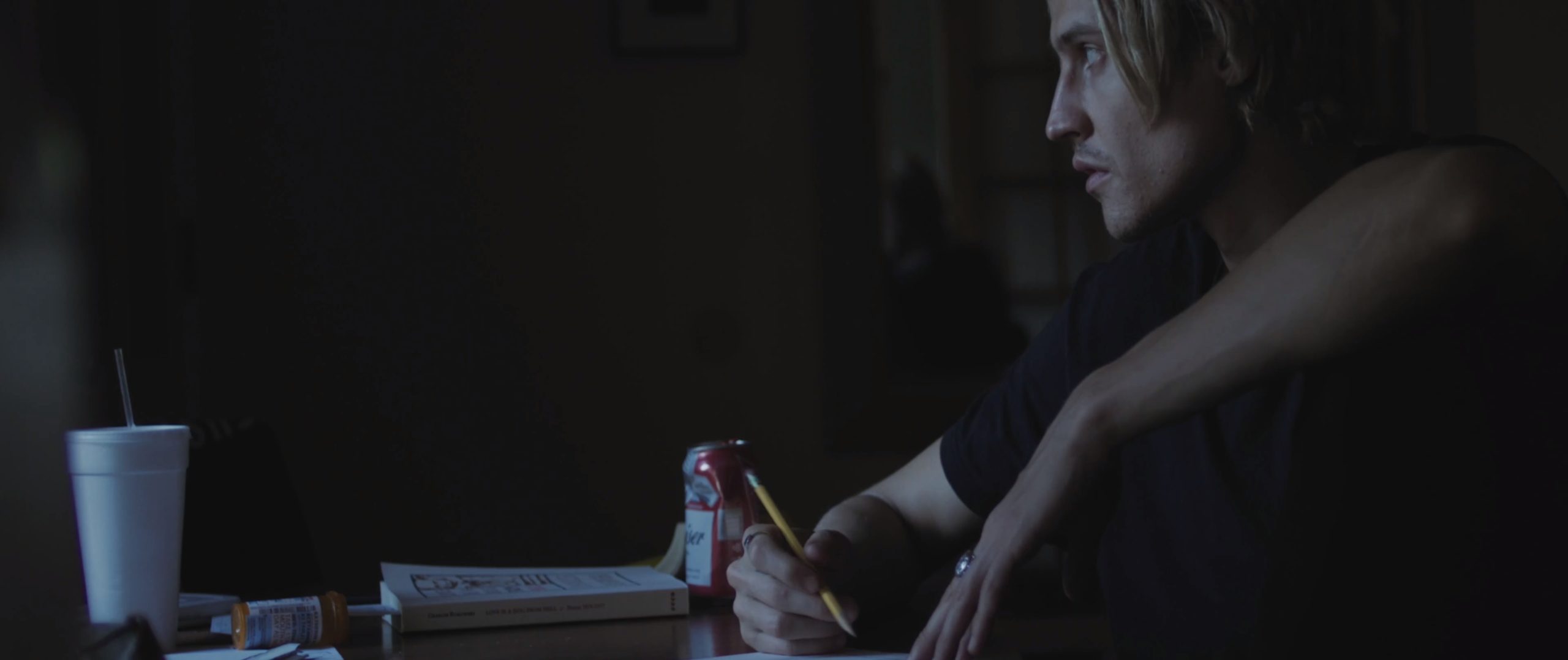
“My ten-year-old self would beat me up and down the playground if they saw me today…”
Remember those sitcoms when someone’s childhood self basically assaults their adult self because they’ve lost their way? We don’t feel that way. Our childhood self would give us a high-five and crack open a cold bottle of yoo-hoo because we did exactly what we set out to do… We’re directing films.
Here’s to you and me, ten-year-old self!
The films we direct mean a lot to us. They’re films that we’ve dreamed of, written, produced… the whole nine yards. And they have a deeper meaning — that parts very important. The films we produce and direct aren’t simply tools of entertainment. They’re a looking glass into another world to help our audience broaden their perspectives. We’re not saying they’ll make you sell all your crap and live as a nomad — nothing that drastic. But (we hope) they will make you think deeply, differently, and more compassionately. The world could use a major dose of empathy, after all.
Aside from our lifelong ambitions and unrelenting dreams, our truest motivator for directing films is the fact that we love to create art. Heck, we exist to create art! And though we immerse in many disciplines, filmmaking is what speaks to us on the most intimate level. It’s filmmaking that started us on this path. We’re not talking about when we were kids filming with our parent’s camcorder shooting movies with our brothers (even though that did happen). We’re talking professionally. Video production was the heartbeat of C&I Studios at the very very beginning — it still is the heartbeat, but it’s pumping blood through a ton more arteries!
It’s video production that opened us up to new worlds — both figuratively and literally. And so, we’ve followed our passions without question, regret, or hesitation.
What’s pushing you forward?
WHAT IS C&I?
We’ve been discovering the truth since day one. And the answer has been changing since day one. Over the years, C&I has been a content agency. It’s been a movement. It’s been a career for many, and a place of belonging for even more. It’s been a place where you come to get lost in stories. It’s been a place where you’ve come to create stories of your own. It’s been many things. It’s still all of these things. And we’re adding to it.
At this very moment, C&I is a dream factory.
Let’s break it down for you.
We are constantly thinking of that next thing, dreaming up new stories and inventing better ways of telling them. We’re contemplating life inside and outside of our industry, always. And thinking of how we can unite the two so that work never feels like work and life is never mundane or ordinary.
That’s the dream part.
The factory part means that we’re not just thinking about all of these things. We’re acting on them. That’s a really important distinction. We never want to do this or that, or try to do this or that. We just — in the words of the great Shia LaBeouf — DO IT. If we fail, we learn from those lessons, apply them and succeed the next time… or the next time… or the next time. It doesn’t matter how many attempts it takes. In the end, we always get it done.
Today, C&I is very much like we were last year and the year before that and the year before that, even. The sole difference is that we’re putting so much more of our energy into producing original works of art from C&I Films. And this… this is our Director’s Reel.
How to Create Video Tutorials That Everyone Will Love
How to Create Video Tutorials That Everyone Will Love
How to Create Video Tutorials That Everyone Will Love
According to Forbes, one of the biggest reasons people decide not to buy a product is that they feel like they can’t trust it or don’t understand it.
In other words, you may need to be more transparent about your product, or service if you want them to sell better. How do you do that?
By creating easy-to-follow tutorials-duh, highlight how your products generate solutions, not problems. Whether you are teaching someone how to jam out on the latest electric guitar or showcasing a Pillsbury mixing bowl, people like to know what they are buying and how it works.
Studies have shown that 72% of consumers prefer video marketing to text marketing. But you should offer both because everyone learns differently. Plus, if you create a video, you can automatically convert it to text with sonix.
If you want to make the most significant pop on your customers’ buying decisions, you’ll need to create video tutorials.
Its time to show off your creations in a new light!
If you’re not tech-savvy, this may seem a little bit daunting. The good news is that video tutorials should always be simple, short, and to the point.
However, they should also have good production value and good quality, or your viewers may stray away before the video is over.
Let’s uncover all the allures that will keep your customers coming back for more.
Know What You Want to Accomplish
Before you get into the nitty-gritty details, decide what you want to achieve with your video tutorial.
It’s important to note that tutorials are different from general marketing videos and will accomplish different goals, like selling “the sauce you never knew you needed.”
A tutorial does more than show off the features of your product. In fact, you need to keep it short, so you can’t spend a ton of time talking about all of the great features your product comes with.
Instead, consider your tutorial a trouble-shooting video that will address the most pressing issues your customers may encounter.
A great way to determine what your tutorial needs to cover is by reviewing the reviews and feedback left by previous customers. If you notice a recurring issue that customers have with a particular function of your product, spend some time in the tutorial showing them how to get past the issue.
Potential customers will read the reviews before making their decision, and you can use your video tutorial to answer any questions raised by your negative or mixed reviews.
Put Together a Storyboard and Script
Now that you know what your video tutorial needs to accomplish, it’s time to figure out how to make that goal come to life. Begin with a storyboard so that you can plan your video shot by shot. These don’t have to be complicated!
If you’re recording a live video, think of your storyboard as the comic book version.
Nine to twelve panels should be enough for a shorter video and will allow you to draw out (as crudely or intricately as you like) the steps in your video. If you’re recording a computer screen, use a series of screenshots rather than cartoon panels.
Now you’ve got a tangible image of what your final video is going to look like; It’s time to figure out what needs to be said!
As you’re writing your script, keep a few things in mind. First, you want to explain your product as clearly as possible without losing any crucial information.
Second, you want to make sure you’re not just telling, but showing and telling at the same time.
One way to achieve a seamless showing-and-telling video is by scripting out actions that accompany each line. For example, if your line is, “To achieve an XYZ effect, you need to hold down the 123 button,” your action might be, “Zoom in on 123 button.” For every question your lines might raise, your actions should answer them.
Get Recording
Believe it or not, you don’t need expensive equipment to produce a high-quality tutorial.
Even some of the newer smartphones will do the trick as long as you have the right tripod adapter and can get the phone’s camera to focus.
Most importantly, make sure the camera is capturing the speaker and product directly, and not at an angle or distance that will obscure the speaker’s actions.
Whether you have a massive budget for equipment or not, there are a few steps you should always take to guarantee high-quality footage.
Find a space where background noise and distracting clutter are at a minimum.
If necessary, add extra lighting that will draw the viewer’s eye straight to the product and the person conducting the tutorial.
As you’re recording, you may fumble some of your lines or actions. When this happens, don’t start from the very beginning. Pause, regroup, and say the line and complete the action again. You can remove these errors during the editing process.
Polish with Editing
When it’s time to edit your video tutorial, don’t get caught up on perfection. You’re not trying to win any awards; you’re just providing your customers with efficient solutions to problems that arise from their lack of understanding.
The most important thing is that the video is easy to watch, easy to follow and effectively conveys your message.
The most important part of editing a video tutorial is cutting out all of the unnecessary bits.
Get rid of all of the fumbles we mentioned earlier as well as any moments where the speaker went off script or spent too much time discussing features that aren’t relevant to the question being answered.
In the end, you want to end up with a finished product that is somewhere between two and ten minutes long.
Post Your Video Tutorial Online
Once you create video tutorials, you need to decide where to post them.
Consider posting them somewhere on the product page where people will have easy access to them upon viewing the product. Alternatively (or in addition), create an FAQ section and use the video tutorial to answer a question you know your customers often ask.
If you have a blog or use your social media to promote your products, consider posting your video tutorial there, as well.
Make it shareable so that your viewers can pass it along to their friends or family who have questions about how your product works!
Hire a Company to Create Video Tutorials for You
If you’re still not convinced that you have the skills to create video tutorials that your customers will love, consider hiring professionals!
This can be an excellent investment for your business as a quality video tutorial is sure to increase your sales.
Wondering what we can do for you? Check out our video and film production services! We just might be the solution to your business’s problems.
Jumpstart: 7 Vlogging Equipment Essentials
Jumpstart: 7 Vlogging Equipment Essentials
Do you want to get Internet famous?
In the mid-’00s, video sharing platforms like YouTube gave birth to a brand new type of artist and celebrity: Vloggers.
A few short years later, and these video bloggers have gone from niche online novelties to mainstream acclaim.
Nowadays, it seems like vloggers are a dime a dozen. So, those looking to tap into this world need to make sure they have the right tools in their corner to set themselves above the competition.
Interested in creating a channel, but aren’t sure what kind of vlogging equipment you’ll need to get started? We’ve got you covered.
Here are the seven essential pieces of vlogging equipment every successful video blogger needs.
1. Camera
This one may seem like a no brainer. But, a vlogger’s camera is the most valuable tool in their content generating arsenal.
After all, you can’t have a video-blog without any video!
That said, before you run out and buy the best camera money can buy, you need to take a moment to decide what kind of content you’re going to be creating. For example, if you want to vlog about your love of extreme water sports, you may not want to invest in a top of the line, but not waterproof, Canon Powershot.
You also need to take some time to think about what you want your overall style to be.
If you’re going for an ultra-sleek, film expert look, you may want to invest in an industry-standard camera.
But, most modern smartphones, like the iPhone, feature a camera powerful enough to handle any video project you throw its way.
2. Microphone
If video is the lifeblood of vlogging, then audio is the heart.
While it can be easy to get wrapped up in video quality, if your videos have bad audio, your audience isn’t going to stick around long. So, if you want to be successful in your new career as a vlogger, you’re going to need to invest in a suitable mic.
However, that doesn’t mean you have to go out and buy the most expensive microphone on the market. You can start with something cheap, and work your way up as you become more comfortable with audio editing.
That said, there’s one aspect to choosing a mic you’ll need to keep in mind.
Have you ever tried to talk to someone on the phone on a windy day?
Unless you want your audio to sound like you’re always on the set of *Twister, you’ll want to invest in a wind or puff guard as well.
You may also want to consider investing in some sound dampening material to make sure your auto comes out sounding crisp and clear.
3. Tripod
Whether you’re recording at a desk or wandering around outside, you’re going to need a way to support your camera.
While tripods are a bit of a standard when it comes to recording, they aren’t always the best option. When it comes to choosing camera support, the name of the game is keeping everything in frame and focus, and your shot nice and steady.
One favorite of many successful vloggers is the GorillaPod by JOBY. This nifty tabletop tripod has fully posable legs, so you can mount it just about anywhere to ensure a perfect shot.
4. Lighting
If you only invest in one type of lighting to cover you for the entirety of your vlogging career, make it a ring light.
Ring lights are the perfect way to evenly light objects in front of a camera.
Because the light comes from all angles, by using a ring light, you can ensure you won’t have any awkward shadows or shading on your face.
That said, there is a little more to lighting than what’s in the foreground of your shot.
While you can technically balance the lighting in a shot with regular house lamps, or even natural light fro a window, nothing beats the softbox.
Softbox lights are the best way to ensure even, gentle lighting throughout your shot. Because of their standard light-dispersing film, you won’t have to worry about any direct rays or awkward glares.
5. Remote Shutter
Say you’re recording a vlog, and you need to take a short break, what do you do?
While you could leave your camera rolling and wind up with an obscenely long piece of footage to edit down, it makes much more sense to stop recording.
But, if you hit the record button on your camera, you could risk tilting or moving it. And, that might end up throwing off the rest of your recording.
And that’s where the remote shutter comes in.
With a remote shutter, you can start and stop your camera whenever you want, without the risk of throwing off your setup mid-session.
6. Green Screen
While this particular tool is especially popular with the Let’s Play crowd, the green screen is an essential tool in the vlogger’s arsenal as well.
If you’re planning on being a little more daring with your editing, or are looking for a way to jazz-up a reaction video, the green screen can help.
And, if you don’t have a decent space to use as a backdrop to your videos, a green screen can help create the ideal background to fit your aesthetic.
7. Editing Software
Finally, once you have everything recorded, you’re going to need a way to pull everything together.
Tools like Adobe Premiere and After Effects are industry standard for a reason. That said, they can be pretty daunting if you’re new to the world of video editing.
Fortunately, there’s plenty of editing software out there that’s just as good and a bit more user-friendly.
Programs like Apple’s iMovie, are perfect for new vloggers looking for a way to cut together their video footage and audio recordings. Many of today’s most popular YouTube stars got their start using software like this, and a few still do.
Your goal as a vlogger should be to generate content consistently. And, one of the best ways to do that is by using the tools your most comfortable using. You can always learn new skills as your career progresses.
Choosing Your Vlogging Equipment
Now that you know what kind of vlogging equipment you’ll need to kickstart your career, it’s time to start shopping.
Need a little help finding the right tools or learning the skills you need to become a successful vlogger? We’re here to help.
Contact us for more information about our available services, or to kickstart your online career today.
How to Build a Brand, Get More Sales, and Create Communities with Video Storytelling Marketing
You need to pick media that users will want, and fill it with people that they can relate to. Your media needs to fit your platform. If you have a high-energy, innovative SEO techniques on your website, your video should have the same energy.
If your site’s classy, stay classy.
Also, know where your audience is in the journey. If you have a cold prospect that clicked your link, an image may be the hook they need. Or the frame displayed in the video window should catch their attention. A short video probably makes sense. If a user is revisiting your site maybe a longer video would convince them to work with you.
How To Grow Your Brand And Generate Sales Through Video Marketing
Wyzowl’s State of Video Marketing survey says 81% of businesses that added video content to their marketing saw a sales increase. And 94% of businesses felt that video content is an effective tool. Find out how video storytelling marketing can help build your brand.
Have you ever done a Google search, found a post with a great title, just what you were looking for? You start reading. Wow! This is great content.
But as you scroll, it seems to be a never-ending sea of text. It’s some great writing, but your eyes start to glaze over. Staring at paragraph after paragraph almost hypnotizes you.
Is your content boring your visitors? You don’t want your users tediously scrolling. Groaning as they try to extract the information. Find out how visuals can make your content exciting!
Visuals Make Content Memorable

Visuals can break it up and really grab your audience’s attention. Images also evoke an emotional response. Video storytelling marketing basically involves adding a video to your content. But there’s a reason why it’s effective.
Our brains are really good at processing images. In fact, when reading, your brain interprets known words as tiny pictures. Because brains hunger for visuals, you need to satisfy them.
Hubspot recently posted a survey, where the video was identified as the most desired form of content from a brand or business. 54% of respondents said they want to see videos from a company they support.
Your video doesn’t even need an amazing soundtrack or script. Many people watch videos on mobile with the sound off. Include interlude screens or text overlays so your audience knows what’s going on.
Tips for Video Storytelling Marketing

1. Make it funny.
Humor can be rare in business marketing, but it can be effective. Sometimes visitors expect a boring video. But if they find something funny instead, you’ve created a memorable and positive association for your brand.
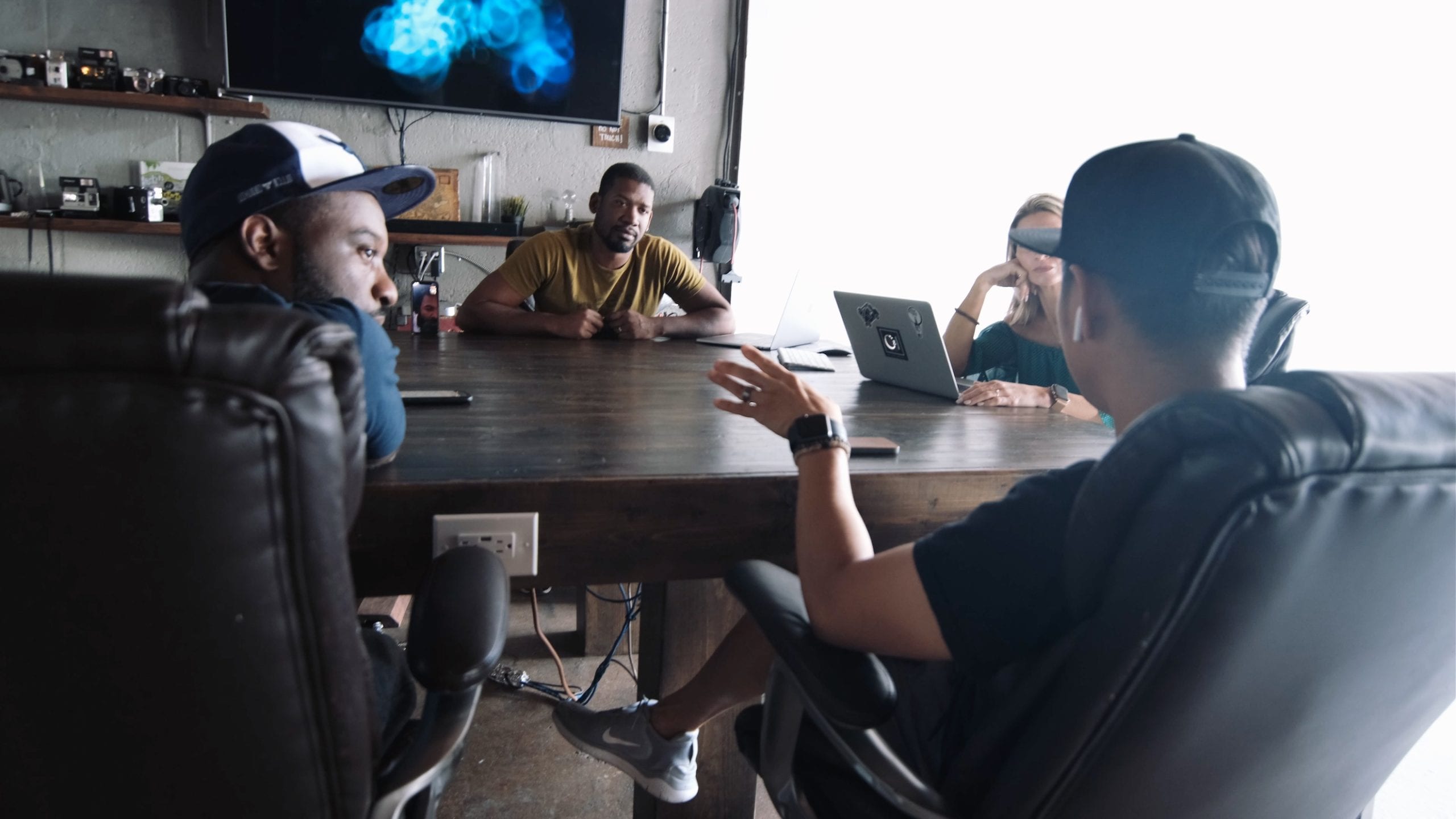
2. Get creative.
Ask: What’s the main point of my content? Then think of unusual ways to get your point across. If you surprise yourself with an idea, chances are you’ll surprise your audience too.

3. Have a beginning, a middle, and an end.
We’ll have more on this in a bit. But the point is to actually write it out on paper. Create a storyboard. Doing so will help you write a script and help you film it.

4. Show it. Don’t say it.
Think about how you can use your video to share your story. Don’t just start a narration. Can angles, colors, or sound effects tell the story? Videos like this will create more emotional investment.
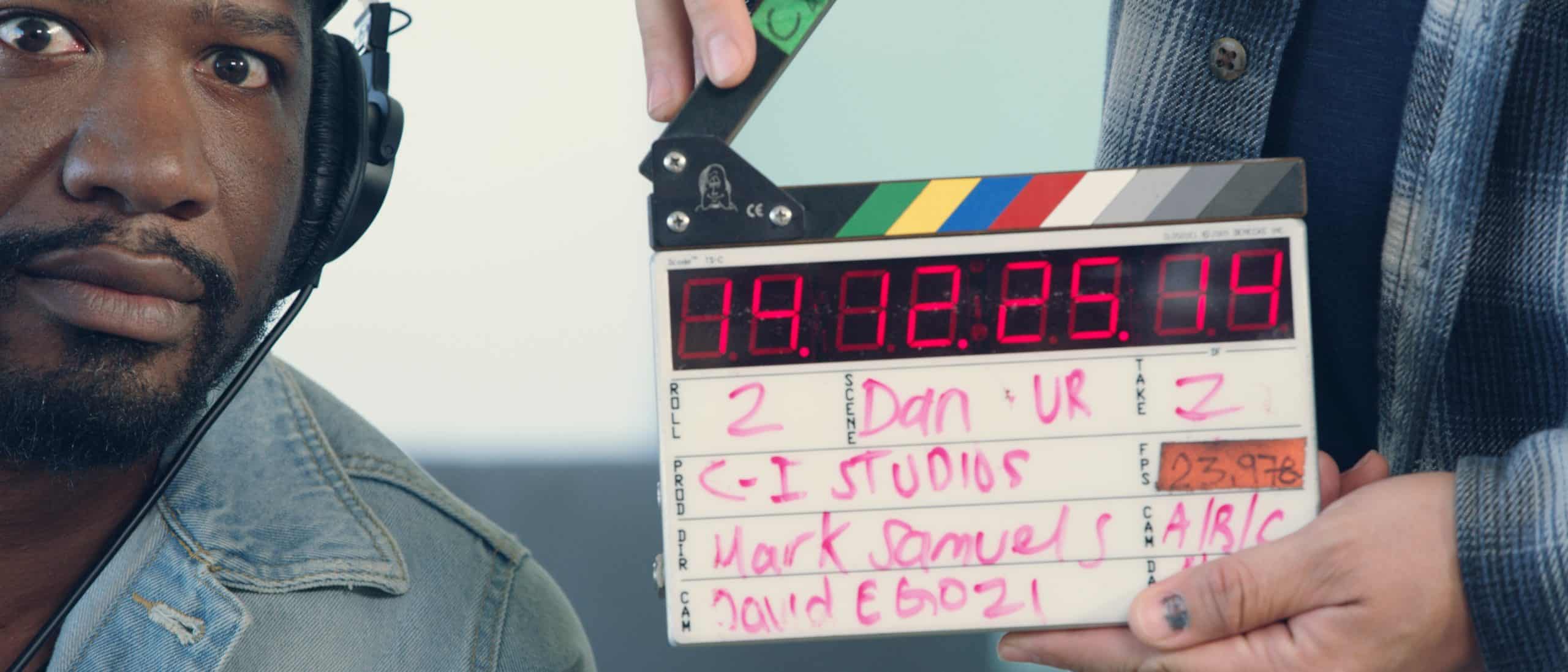
5. Keep it short.
Figure out how to condense the story (and emotion) into a short video. You don’t need a long time to tell your story. You know that funny five-second GIF you’ve watched over and over? It doesn’t take much time to tell a story.
Steps to Visual Storytelling

1. Find Out What Motivates Your Audience
A buyer’s persona will give you a lot of the info you need about motivating your audience. Typically potential customers come to you because they need you to help them solve a problem.
Their problem is creating an emotional response within them. Emotions influence who we trust. They connect our past by bringing up feelings of nostalgia. And they help us make sense of complex information. As a result, clever stories can be quite persuasive.
Some motivators might include feelings like:
- Want confidence in their future
- Want to feel free
- Want to belong
- Want to feel secure
- Want to succeed
Keep these things in mind when coming up with your videos. How can you build around those themes?

2. Pick a Good Story
You don’t have to (and probably shouldn’t) make something up. Tell the story of your company. Or maybe you have a customer story that you could follow. It doesn’t have to be a long video. But it needs to tell a complete story.
What makes a story? Start with the hook. This needs to catch attention fast. Then ramp up the action. Until you reach a climax. Now show the resolution. The last part and the most important part of your brand is a call to action. Tell the viewer what to do next.

3. Pick the Right Visuals
You need to pick media that users will want. Fill it with people that they can relate to. Your media needs to fit your platform. If you have a high-energy, innovative SEO techniques or website, your video should have the same energy. If your site’s classy, stay classy.
Also, know where your audience is in the journey. If you have a cold prospect that clicked your link, an image may be the hook they need. Or the frame displayed in the video window should catch their attention. A short video probably makes sense. If a user is revisiting, your site, maybe a longer video would convince them to work with you.
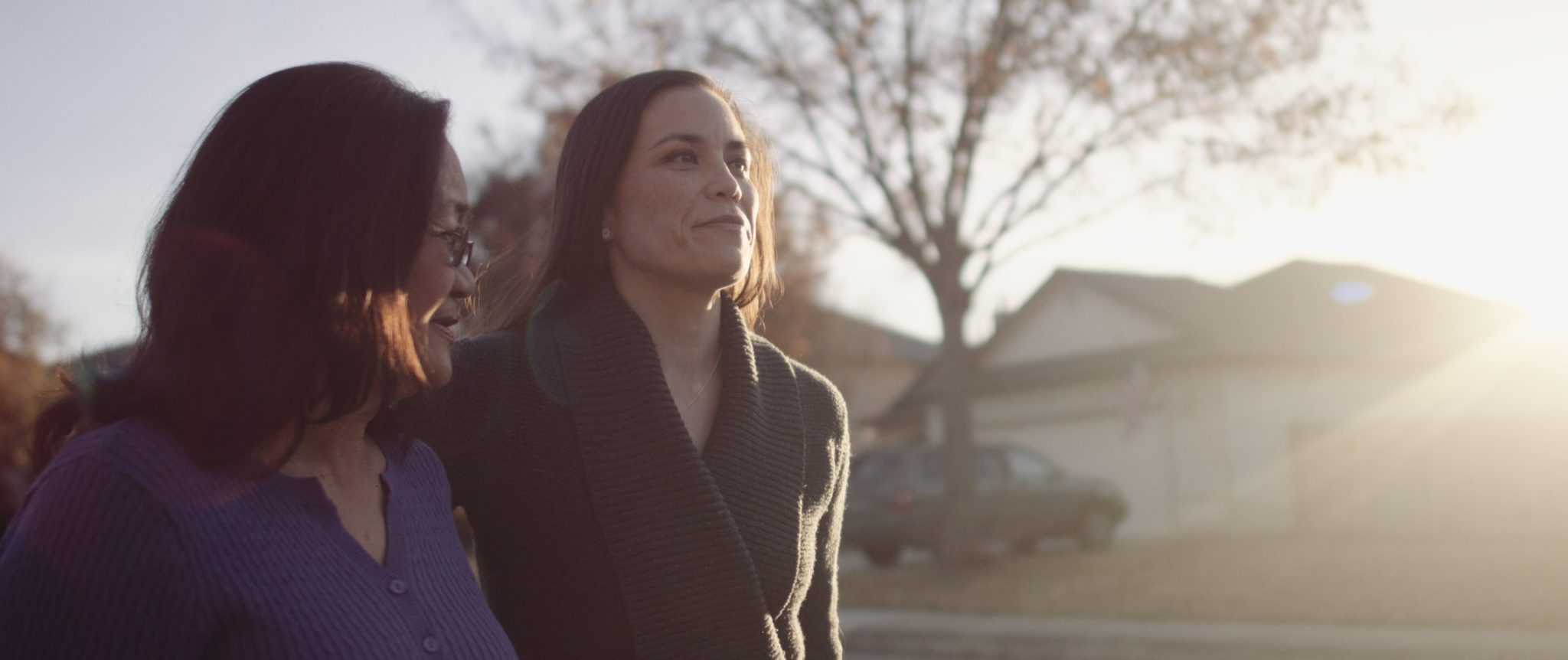
4. Test, Reevaluate, and Adjust
Nothing’s forever. Adjust your video storytelling marketing like you change any other marketing. Find out what works by staying dynamic with the times.
Think About the Big Picture

Often you probably come across videos that only discuss a company’s products and services. But these aren’t the most compelling videos. Your video shouldn’t be able you, but what you do for others. Find your company’s “why.” Market that.
If you sell telecommunications hardware, don’t focus on the hardware, all the features, how great it is. Talk about how it helps people connect. With those they love. How they can reach customers. How it can save lives.
Tell compelling stories. Not that your hardware is online 0.09% more than the competition.
Make People Feel Something with Video

Emotion has a way of making people take notice. And act. If they take notice, they might remember your story. If they remember, they might be moved to buy.
Specific emotions result in specific actions. If your video makes someone happy, maybe they’ll share it with someone else. If your video makes them feel sad, maybe they’ll give.
Think about those sad-faced puppies with Sarah McLachlan playing in the background. If your video elicits anger, maybe it will lead to it going viral. That’s more like: EVERYONE NEEDS TO SEE THIS! IT MAKES ME SO MAD!
Tell Your Story
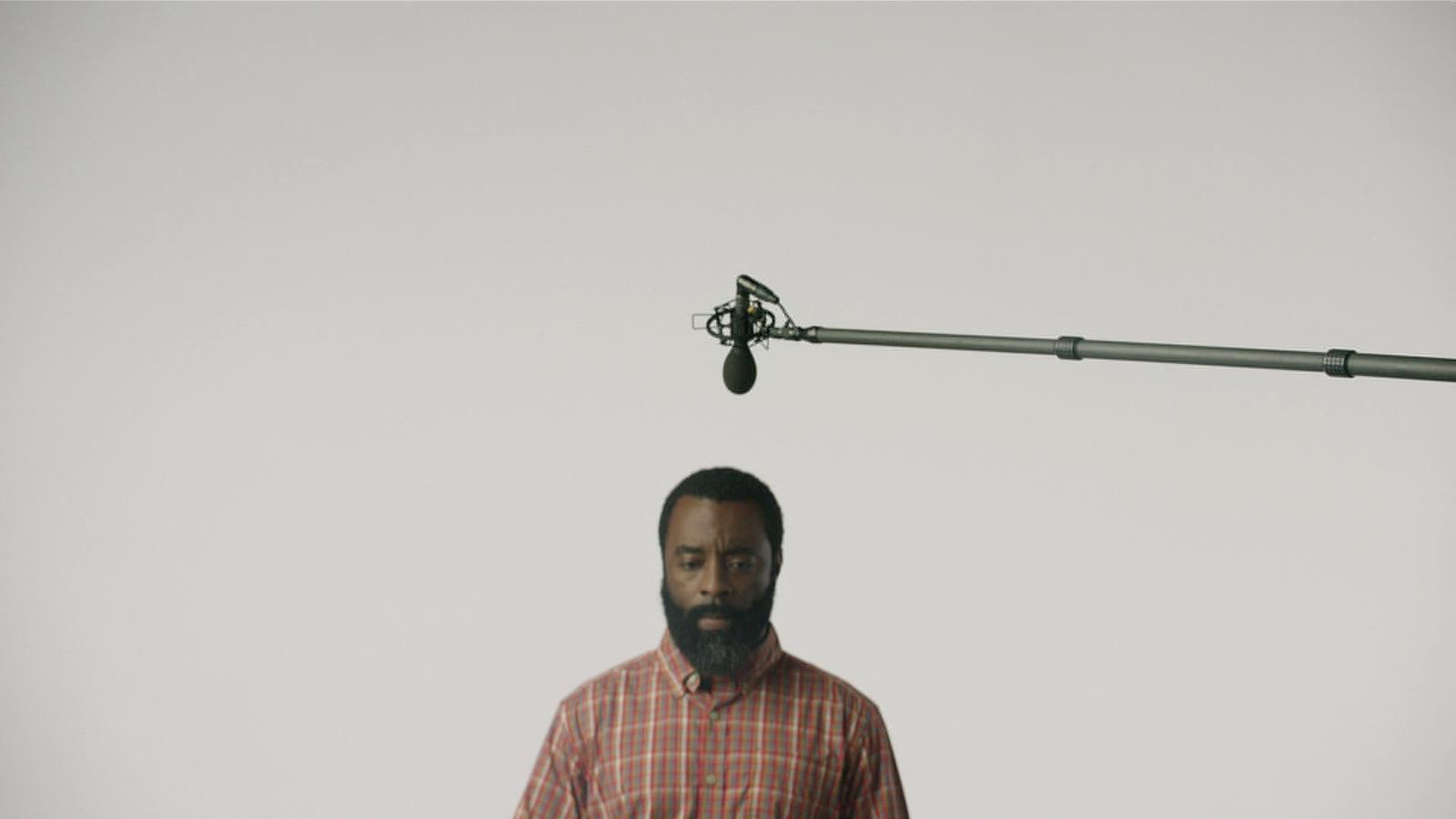
Don’t be that boring website with an ocean of text. Or worse, don’t waste time on great writing to have your visitors go numb scrolling the text. Energize your content. Dazzle potential customers with eye-catching visuals.
Add video storytelling marketing to your site. Get quality video and film production services from C&I that will engage your audience. We’ve worked with some of the world’s biggest brands. Contact us today!
Christmas Eve
When we were young…
…we would watch old movies, stare at actors and models in photography magazines, and get lost gazing at iconic billboards. But it wasn’t the talent that we were so attracted to. It was simple for us…how did they make this? How did they make me feel what I feel?
At that moment, for most of us who work at C&I, we knew it was the behind the scenes, the crew, the forgotten ones, that we related to the most. It was where we knew we belonged.
A lot of people know our studio as an agency. It’s pretty incredible to get to work with the range of clients that we do, but when we are dreaming, we often find ourselves thinking about creating inspiring projects to change people’s perspectives.
Filmmaking is one way we do that. Our studio has made a few films in the past, but we wanted to take a big step towards making new, quality, original content. So ambitiously, in November 2017, we decided to create another film, Christmas Eve, written and directed by Joshua Otis Miller.
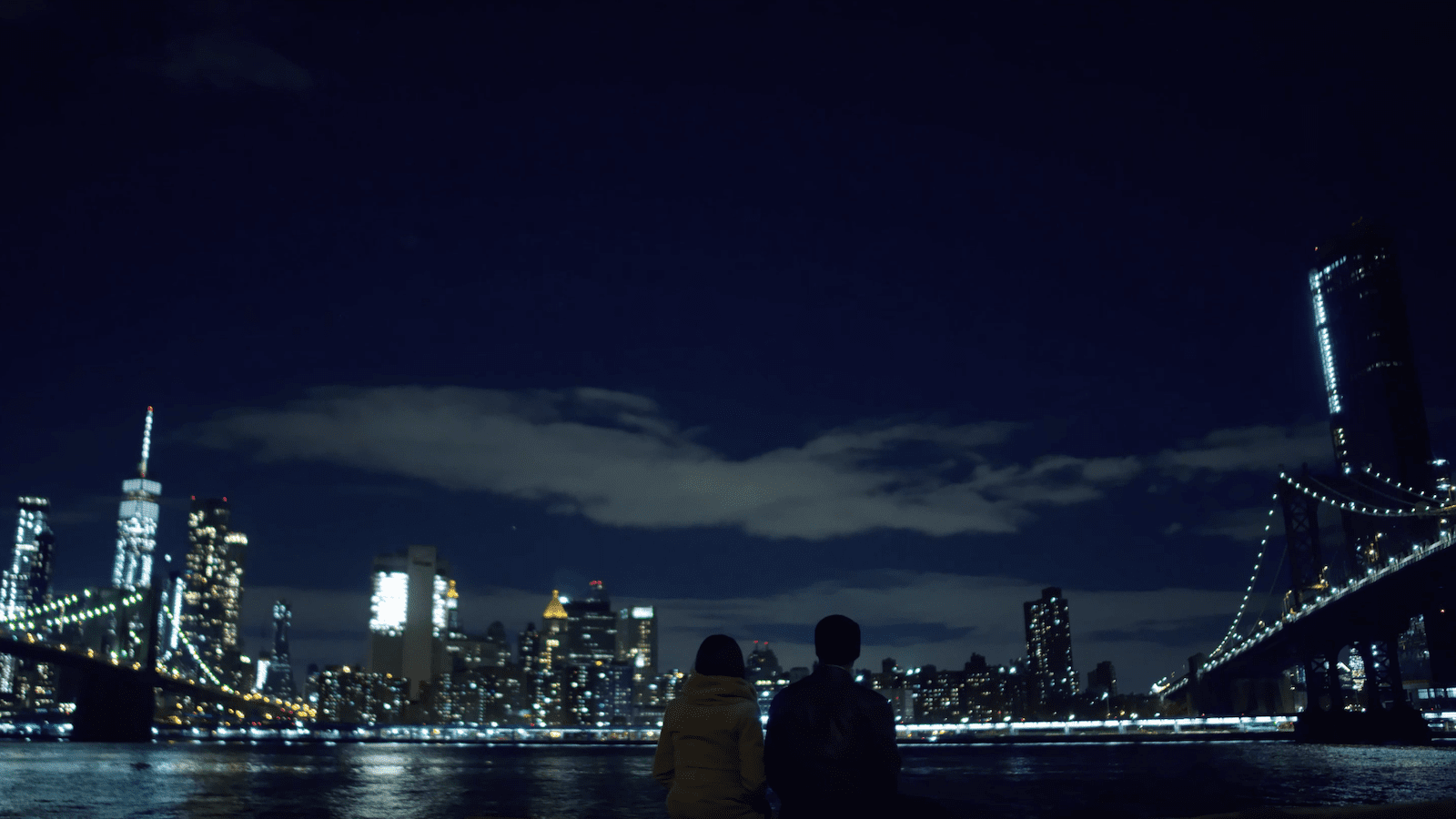
It sounds fun, but it’s really not.
Making things like this, while still doing all the client work that is required of you is very arduous task. The nights were already long and the time was already short, but regardless, our love of creating always beats sleep.
The film was written in November of 2017, and on December 14th, we started production on what we knew would be a huge challenge for us. We knew it would be a challenge because our films up until this point were manageable. Two actors, one location and a good story. Christmas Eve shook everything up. We would shoot in Fort Lauderdale, New York City, and Brooklyn at several locations, with a much larger cast than ever before.
It was last minute—a producer’s nightmare—but we were doing it. In order to keep the budget manageable, we wanted to film some scenes in Fort Lauderdale, making them look like they were shot in New York. This, in itself, was a challenge that made us work so much harder to tell this story.
The one thing we knew we didn’t need to worry about was our talent. Rafael Jordan and Elisabetta Fantone would lead this film and we knew they would be flawless.
We had worked with Rafael on C&I’s first feature film Me, You, and the Road (too embarrassed to link to that film :)). We worked with Elisabetta on our last film before Christmas Eve, The River Cabin. So, it was really awesome to reunite with both of them on our biggest project to date.
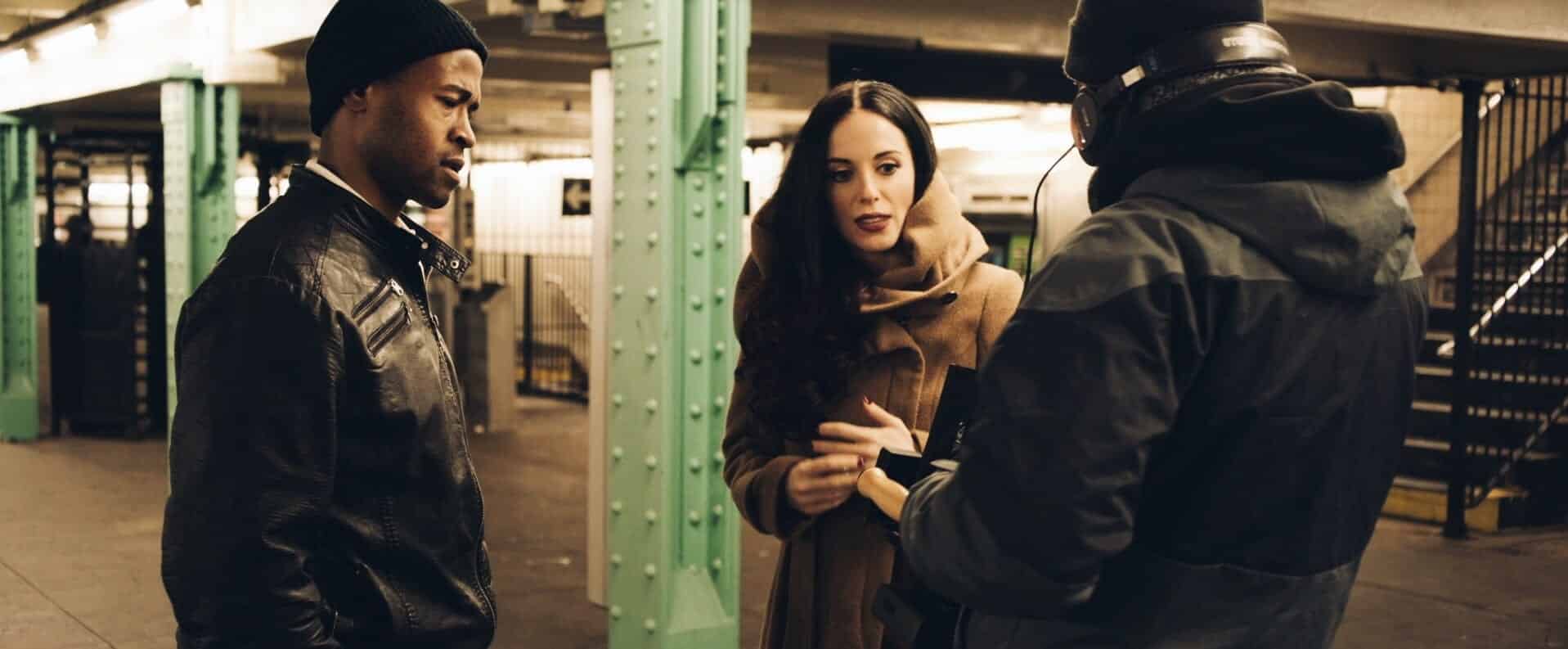
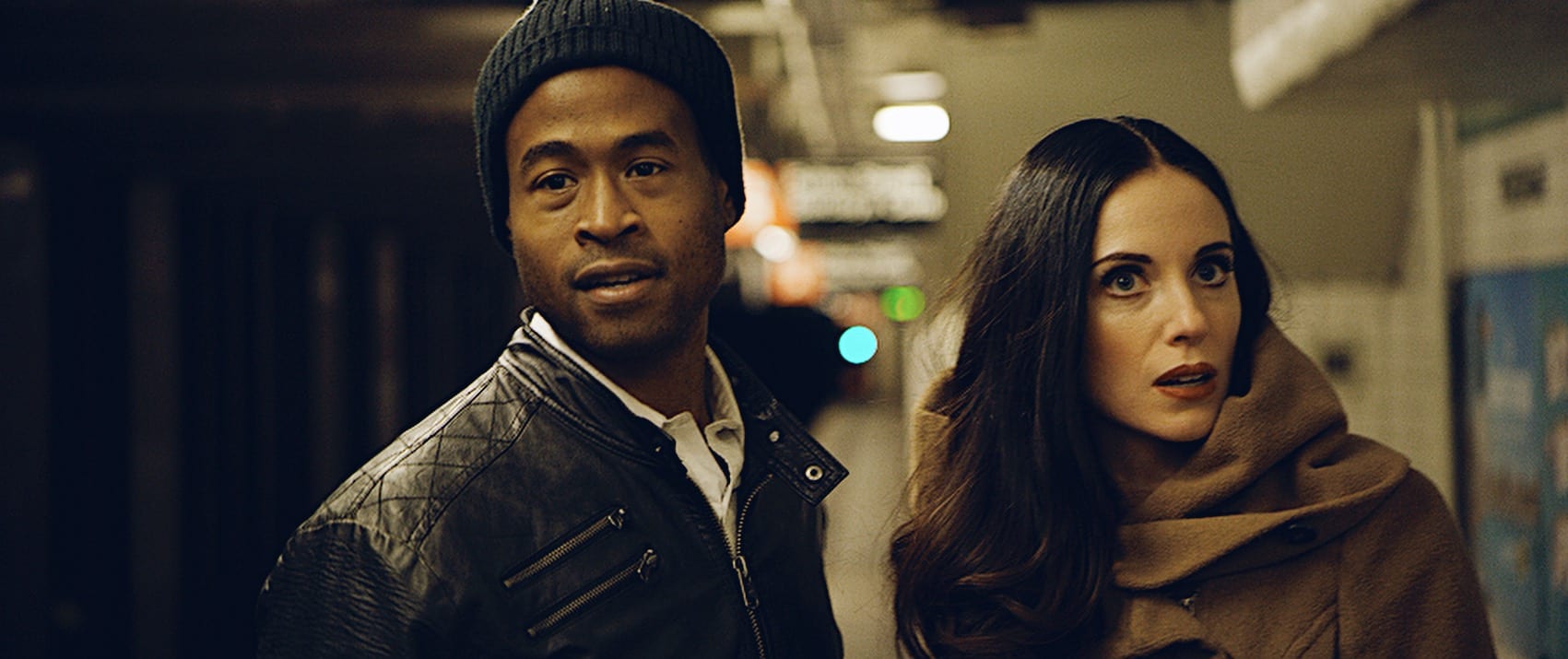
To make matters even more difficult, since we were already battling a tough schedule, we wanted to score the film before we shot it. This is of course, completely unorthodox, but we had a great connection with our composer Darren McFate and we knew he would bring something incredible to the film. And instead of grabbing music from this artist or that one, we hired and orchestra, and Darren wrote and hand crafted each note.
We started with filming in Fort Lauderdale, at the Broward Center for Performing Arts, Riverside Market and our own HQ just to name a few locations. After these first few days were done, it was time to take our talents, and our gear, to New York.
If you’re anything like us, you love gear talk, so here is what we used on this film:
- Red Monstro 8k (Camera A)
- Red Epic-W 8k (Camera B)
- Red Dragon 6k (Pick ups, second unit)
- Red Scarlet 5k (Broll, Pics, second unit)
- Red Raven 4.5K (BTS)
- Angenieux Optimo 24-290
- Angenieux Optimo 30-90
- Schoeps Mk41 Sennheiser
- Mk416 Zaxcom Lavs
- Movi Pro\u2028
And of course, everything in our huge grip truck which is called “The Tom Van” named after our DP Tom Van.
Filming in NYC is where the film got really challenging. We had two days and two nights to get through the majority of the film.
Moving all this gear around, along with our favorite character “The Bike”, throughout New York was a huge challenge. Rafael was challenged to bike everywhere, and if you’ve seen the film, his character is generally rushing everywhere. Thankfully, Rafael is super fit and was ready to bike over and over and over again take after take.
One of our favorite scenes is the scene with Yolanda.
Carolyn Johnson is an actress from South Florida that we flew to NYC to do this scene, and from the moment that she stepped on the set we knew this scene would be really special. The way that she delivered the lines “I can see you Michael” really became a keystone moment of the film.
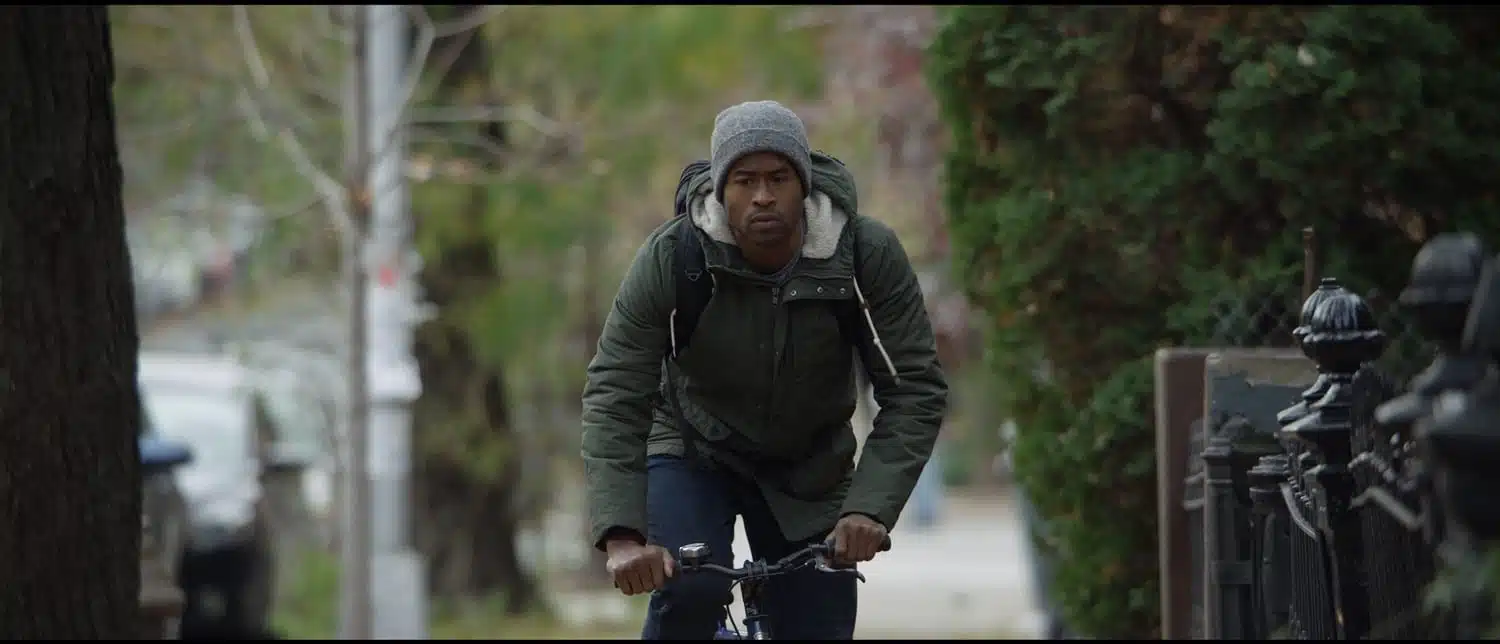
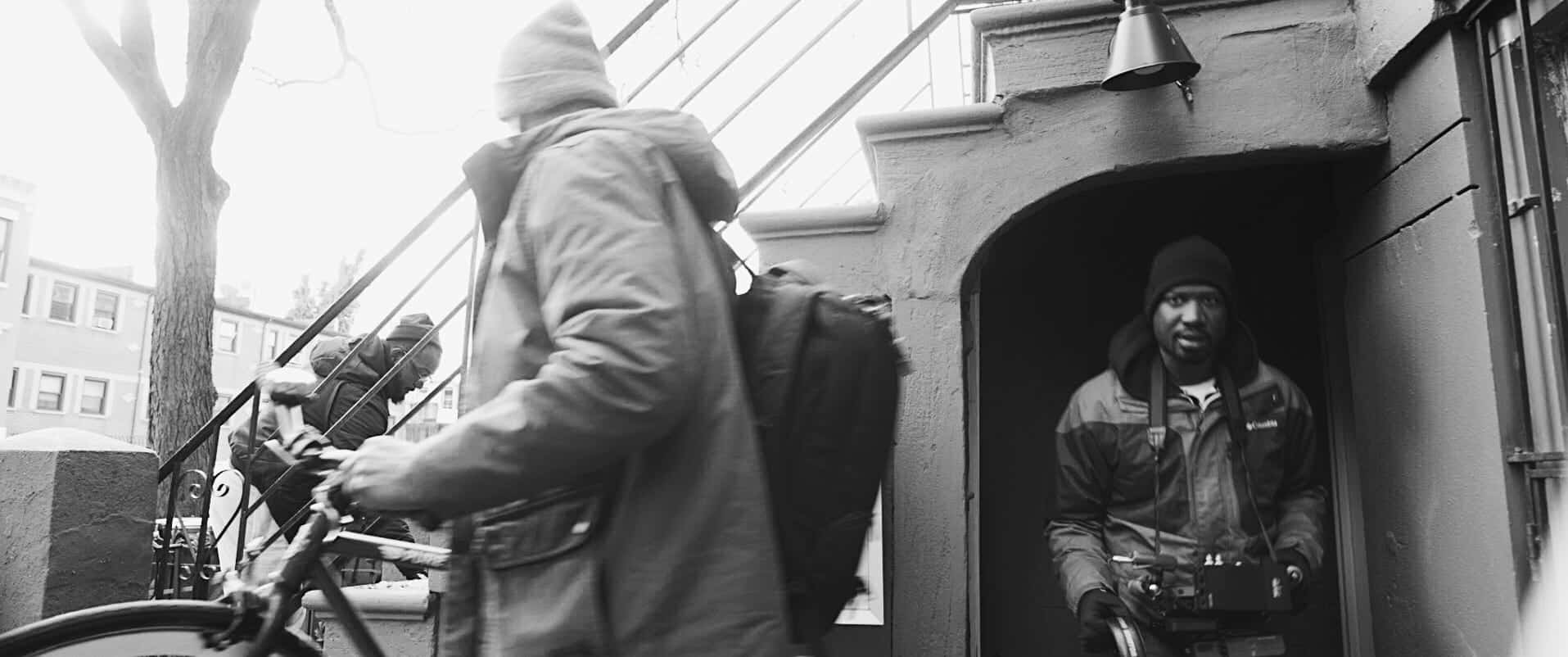
Shooting all day is one thing, shooting at night was another. And the kicker was, we were a crew of Floridians shooting in the freezing cold.
Spending so much time outside, standing on set—and for a small production like ours without trailers and stand-ins—was a big challenge for our talent. We all just pushed through.
On the last day of filming, our backs were up against the wall to get the final eight scenes. That morning, though, we knew we had a problem. When Rafael woke up, he didn’t have a voice. All of the biking, and the cold wind hitting his neck caused him to get sick and lose it. We pushed through for the rest of the day, passing him whiskey and honey to drink, hoping that his voice would return for the all the night scenes we had to do around 2 AM.
But at night, it didn’t get any better. And we had the horrible decision to make; either continue shooting the film and have a lead character without a voice, or stop filming, miss our Christmas Eve deadline and finish it…later.
We chose to stop. And it killed us.
Our excitement just died and it was a very lonely somber flight back to Fort Lauderdale, knowing that what we set out to accomplish… we didn’t.
We wanted to make it work, but our agency work was demanding our attention, and we knew chances were slim to none for all our schedules to line up again in the next few days. We had no choice but to wait a year to complete the film.
An entire year of just being…paused.
It sucked.

Projects went by, our agency work got very busy. We were shooting and editing a lot this year, lots of ad campaigns, television commercials traveling to cities across the country. It was busy. But our producers held us together, and they pushed the entire year to get us back on track. And in November we were back in NYC with more time, thicker jackets, a bigger and better crew, and we finished this film. We still had issues, of course. We got kicked out of locations, rain and snow ruined the first day of the shoot, but we made it all work. And now, finally, December of 2018, we are releasing this labor of love.
If you watch the film, there is a scene of Michael and Eve walking under all of the magical lights….it was slippery and icy as we filmed that scene, but with a few camera tricks and awesome acting, you would never know it. Movie Magic is a real thing.
Filming that last scene was unreal. To be standing there, between the Brooklyn and Manhattan bridges, knowing that we were on the last shot—finally.
To us, our cast and crew were absolutely heroic. The ones that believed in this project before it was tangible. The ones that believe in creating meaningful projects with purpose to challenge us, inspire us to be better versions of ourselves. So much has to come together to make a film perfect, and to us, everything does because of one thing.
It’s the crew.
It has always been the crew. Not the gear, or the location…the crew.
So, while most people are looking at the Colin Firths and Meryl Streeps of a film, remember the blood, sweat and sacrifice that the crew put in to make your favorite scenes come to life and the names that you scroll over in the credits embody the same spirit as the people that work in our studio. Our work is often unnoticed and forgotten, but this—this is our love. Telling stories is always about letting the story itself shine, and that requires the storytellers to stay in the background.
True magic isn’t solely made out in front, on display…it’s built upon a foundation of effort in the shadows. It’s built upon individuals choosing to press in, dig deeper, and require more of themselves.
How to Build Your Brand with Videography and Photography
How to Build Your Brand with Videography and Photography
4% of consumers make a purchase after they view a socially branded video. 39% of consumers will leave your website if your images don’t load quickly enough.
Images, whether they’re moving or still are essential, especially when you’re trying to reach an online audience. And when done correctly, photography and videography can quickly become a vital part of your brand.
But only if you know how to use brand promotion using images correctly. We want to help you promote your brand.
Keep reading to learn everything you need to know about building your brand with videography and photography.
What Brand Promotion Is
A company uses marketing to get a customer to buy their products and/or services. Companies use branding to build customer loyalty and create long-term relationships with them.
When done well, a brand name can become synonymous with a product such as:
- Kleenex
- Chapstick
- Bubblewrap
- Q-tips
Thanks to various marketing strategies such as promotions and commercials, a product can soon become a household name. While your business may never reach that level of brand recognition, it’s still important to brand your business.
Why You Should Use Photography to Brand Your Business
There are good reasons why brands incorporate visuals into their brand stories. Visuals do the following for your business:
- Aesthetics
- Supports your brand identity
- Translate your company’s personality
They say you never get a second chance to make a first impression. A professional photograph makes a lasting first impression.
Good Photography Commands Attention
Images are powerful when done correctly. Especially since they catch people’s attention much more quickly and powerfully than words containing details can.
Consumers can view as many as 5,000 ads every single day.
That’s a lot of clutter.
A good photograph can not only help capture your target market’s attention but keep it as well.
How to Use Photography to Brand Your Business
You can’t just snap a photo of any old thing and hope for the best. Photography is an important part of your marketing strategy, so you should take the time to build up a concept first.
If you’re stuck for ideas, head to sites like Pinterest and Instagram to see what images your competition is using. See what photos capture your attention the most.
Remember that your goal is to communicate a message to your audience through imagery. Make sure that the photos you choose translate your brand’s personality and are consistent.
Think Like Your Target Market
Pretend you’re a potential customer. You’re not designing and choosing images for yourself. You’re doing it for them.
Use images that your typical consumer will most positively respond to.
Focus on Your Message
Consider the following when sorting through images:
- Current color trends
- Trends in visual communication
- Natural lighting
- Good composition
- Authenticity
People buy products and services because it triggered an emotion in them. Aim to translate sincere emotions that will encourage people to take the right kind of action.
Why Videography is Important to Branding
72% of consumers learn about products and services by watching a video. And 83% of them would consider sharing videos they liked with others.
Sharing videos help with the following:
- Increases brand awareness
- Improves customer engagement
- Increases ROI (return on investment)
In 2019, videos account for around 78% of internet traffic around the globe. And with so many people being visual learners, it’s a great way to educate your audience and get them to remember your message.
How to Create Great Videos
A great video tells a story. A bad video tries to sell a product or service.
Your goal should be to provide value to your customers while also appealing to their needs and hidden desires.
Keep in mind you’re not making a movie here.
You Have 10 Seconds or Less to Capture Their Attention
And most consumers have a short attention span. In fact, many viewers will click away from your video within 10 seconds or less.
Make them short and to the point. You can do that by asking questions and/or using teasers to capture and keep their attention.
Laughter, Inspiration, Education
If you focus on creating a video that immediately shows a consumer why they should watch it, they’re more likely to continue watching it until the end. You can answer that question that in a few ways:
- Make them laugh
- Inspire them
- Teach them
If you’re worried that your type of business shouldn’t be making people laugh, that’s not true. Life is already hard and serious enough.
There are ways any company can use humor, fun, and the energy of playfulness to getting people to relax and enjoy themselves. Meanwhile, a stiff and boring video will have everyone tuning out immediately.
Optimize Your Visuals for SEO
Just like you can optimize your written content for SEO (search engine optimization), you can do the same for both photography and videography.
Before uploading your photos or videos to any social media or sharing sites, host them on your own website.
Enable embedding on your videos to help you receive more inbound marketing links. You should also use video sitemaps.
Tag Your Images and Videos
Do not forget to add SEO descriptions. This helps Google and other search engines determine what your video is about and understand its content.
You can do this by tagging your videos and photos with relevant keywords. Use unique titles and write a description of the image or video, so consumers and search engines understand what they’re viewing.
Performing all of these steps for every video and photo you post will help search engines rank you higher. This will help consumers find your site more easily.
Share on Social Media Sites
Don’t forget to share your videos on social media. Choose which social media sites your target audience is most likely to spend the most time on such as:
- YouTube
Some social media sites allow you to use the autoplay feature. You may also want to add subtitles for those who prefer to watch your video without the sound on.
Hire a Professional
It’s best to get help with brand promotion. Poor-quality videos and images do not convey the right message.
A professional videographer and/or photographer knows exactly how to capture your target audience’s attention and hold it.
We can help you build your brand using the right imagery. Contact us, and let’s work together.
The History Behind the First Photograph
The History Behind the First Photograph
Did you know that the first camera-like device was invented almost 1,000 years ago?
Professional photography has come a long way since then, but it’s always important to know the roots from which an art form sprung into being.
To help you get the full picture, we’ve outlined a history of photography timeline just for you. It stretches from the first photograph ever to our modern technology and more.
How did what we see evolve into something we could grasp at our fingertips from anywhere in the world?
The First Camera
To begin our brief history of photography, we’ll start with the first-ever camera, which was the size of a room and not exactly a camera as we know them today.
Called camera obscura, which translates from the Latin as ‘dark chamber,’ the device was simply a large dark room with a hole in it. When light entered the hole, an inverted, slightly whitened image of the scenery outside was cast against the furthest wall.
The earliest remaining description of this device dates all the way back to ancient China in the 4th century BCE.
This ancestor of the camera was eventually used by astronomers to safely observe eclipses. It was also used by artists who wanted to sketch their models on a piece of paper. They held the blank sheet up against the light-receiving wall and sketched away.
As you can see, camera obscuras didn’t use anything we would call the film. Thus, they didn’t actually take photographs.
In the 16th century, portable versions, like miniature rooms, were eventually created, but even those did not use film to permanently capture the image.
The First Photograph
It wasn’t until 1826 or 1827 that the French inventor Joseph Nicéphore Niépce took what is considered the first photograph.
Using a light-sensitive plate, he took a picture of the Burgundy section of his homeland of France. It’s the same view you would have seen had you been standing all those years ago by the upstairs window of the photographer’s house.
Because the photograph is so old and the method was so primitive, we can now only see vague outlines. If you squint, you can see the buildings’ roofs and perhaps the top of a tree.
If you want to see this singular photograph for yourself, you’ll have to take a trip to the University of Texas-Austin where they keep it in their permanent collection.
The First Selfie
Paris Hilton may have tried to take credit for inventing the selfie with Britney Spears in 2006, but Robert Cornelius has her beat by well over 150 years.
The first selfie, or self-portrait, was taken by Cornelius in 1839 after he sat like a statue in front of the camera for around a minute. When he was done sitting still, he quickly covered the lens of the camera and voila, the first selfie was born.
If that sounds like a long time, it still beats sitting for hours to get your self-portrait done by an artist.
Nowadays, it’s so easy to create one that even monkeys can take selfies, all thanks to Cornelius’s pioneering achievement.
The First Digital Photograph
The history of digital photography begins with the first digital photo, which was taken in 1957 by the American engineer Russell Kirsch, about 20 years before the invention of the first actual digital camera.
The photograph depicts the face of Kirsch’s baby boy in distant contemplation, perhaps thinking about where he lost his rattle.
So how did Russell Kirsch take a digital photograph without a digital camera? His sly trick involved a film image that he then digitally scanned in order to produce what is called the first digital photograph. We’ll let you decide if it’s cheating.
The First Digital Camera
True digital photography arrived on the scene in 1975. That was when the first digital camera was invented by American inventor Steve Sasson while he was working at the company Eastman Kodak, now known simply as Kodak.
This camera was not like the cameras we have today that can take thousands of photos and keep them all on one tiny storage device or on a cloud in cyberspace. Rather, you could only take about 30 images that were stored on a fragile, bulky cassette.
When Sasson tested the device out for the first time, he took a picture of Joy, a lab technician who worked with him. However, Sasson didn’t save the image so it has been lost to history.
Afterward, the 80s and 90s saw a wide range of point-and-click digital camera being produced by various companies. It wasn’t until 1991 that Kodak created a digital camera that could be used easily by professional photographers. SLR and DSLR cameras were then perfected and updated by other companies, such as Nikon, Pentax, Canon, and others.
Now, digital cameras have a wealth of advanced and amazing features that can be put to use, such as frame rate change, flash type, focusing modes, highlight control, ISO settings, and much more.
And the rest is, as they say, history.
The First Photograph of a Black Hole
What does the future hold for photography?
Well, for the longest time, black holes were theoretical phenomena described by the late, great Stephen Hawking and other physicists and astronomers, but earlier this year, the first-ever photograph of a black hole was taken.
Although it’s a blurry, misshapen disc of light, it’s still direct evidence of a black hole’s existence. Remember how blurry and indistinct the view from Niépce’s window in France was?
Imagine how much clearer photographs of black holes and other unimaginably distant objects will be. When it comes to photography, the sky is not the limit.
Are You Ready to Be a Part of the History of Photography?
Now that you can picture the history of photography, you can begin to be a part of it.
C&I is an idea agency that can bring your business to life using top of the line video production and professional photography. Who knows, maybe our advertising solutions will be discovered a hundred years into the future as an amazing relic of the past. Contact us to learn more about our highly-rated creative services.
Landscape Photography: 7 Tricks For Capturing Irresistible Pictures
Capturing Landscapes: 7 Irresistible Photography Tips
People have been taking landscape photography for well over a hundred years.
In that time, the technology may have changed, but the goal hasn’t: to take landscape pictures that do justice to the incredible scenery they are trying to capture.
There are plenty of things you can do to increase your chances of capturing the perfect landscape photo.
Let’s dive into the secrets captured upon the edges of planet earth.
1. Consider Your Timings
Taking a great landscape photograph requires a lot of planning.
The chances are that the perfect spot for taking your photo will not be that easy to reach.
You’ll need to factor in exactly how long it’s going to take for you to get there and set up. You’ll also need to take into account exactly when you want to be taking your shots.
The golden hour may not last anywhere near an hour when you have mountain peaks blocking your sunlight.
Plan carefully to ensure that you’re where you want to be in plenty of time to take the perfect shots at the perfect moment.
2. Choose a Small Aperture
The most stunning landscape photographs give a real sense of the enormous scale of the view you’re trying to capture.
The best way to do this is to have as much of the scene as you can in sharp focus.
That means opting for a small aperture to ensure that both near and far objects will be equally crisp.
Since a smaller aperture lets in less light, you’ll need to opt for a longer exposure, so make sure you’re using a high-quality tripod.
3. Capturing Landscapes with a Wide Angle Lens
Another great way to do justice to the panorama you’re trying to capture is to use a wide-angle lens.
Using this kind of lens allows you to take in a much wider area of the landscape that you are trying to capture.
With the ability to capture such a large section of the landscape, it makes composing your image even more critical.
Try to use leading lines to guide the viewer’s eyes through the image, which can create a sense of even more depth.
If you’re going to take a shot in portrait rather than landscape, the distortion of a wide-angle lens can also make tall objects such as trees or mountains seem even taller too.
4. Add Some Foreground Interest
One issue with taking landscape photographs is that it’s sometimes hard to do justice to the sheer scale of the landscape that you’re trying to capture.
A simple way to give a clear sense of scale is to add some foreground interest to your shots.
If you’re photographing some mountains, for example, you can include some objects in the foreground of your shots that will guide the viewer’s eye towards the mountain peaks. Plants or flowers make perfect choices for a bit of foreground interest.
If you want to give people a true sense of scale, then consider placing a person in the foreground of your shot. This will immediately translate exactly how vast the landscape is.
5. Remember Your Filters
If you’re planning on taking some landscape photographs, then be sure to bring your filters with you.
A polarizing filter is an essential tool for any professional photographer, especially when it comes to landscapes.
You may find that your unfiltered shots look a little bland and colorless due to all the reflected light that ends up in your camera.
A polarizing filter will cut some of this out, leaving your images looking much more vivid and colorful.
If it’s a particularly bright day, you may also want to consider using a Neutral Density filter.
These filters block out some of the light, allowing you to increase exposure time. They can also be used to make some truly stunning images by allowing you to take a long exposure of flowing water, for example.
6. Find Time to Reflect
If your landscape includes a body of water, then be sure to make use of it.
Capturing the reflection of a stunning landscape can allow you to create even more dramatic images that can almost seem to go on forever.
Feel free to experiment; you could try just capturing the reflection of the landscape rather than the scene itself, or go for a combination of both.
Other water features, such as waterfalls or even smaller rivers or streams, can add real interest to your images too.
7. Consider Exposure Bracketing
With such a wide vista to take in, it can be challenging to find a single exposure that will do justice to every part of the scene.
Capturing a perfect sky might mean sacrificing some of the detail amongst the trees. Exposing a foreground flower perfectly might leave you with overexposed clouds. That’s where exposure bracketing can help.
Using your tripod, take several images at different levels of exposure. Once you are home, you can then combine these images using software to create an HDR image that has far more detail than any of the individual images.
Are You Looking for Landscape Photography for Your Business?
Following these tips should help you to capture the landscape pictures you’ve always dreamed of.
If you’re looking for landscape photos for your business, and don’t have the time to try and capture the perfect image yourself, then we can help.
Our professional photographers can help you create the perfect image, whether it’s a stunning landscape or the ideal portrait of your product.
We work with you in a discovery session to find out precisely what you want your images to achieve, before drafting concepts, creating shot lists, and then taking, editing, and even distributing your images.
We also offer a wide range of other services that go beyond video production and photography. Get in touch today to see how we can help you.
Create Purposeful Video Storytelling in 6 Steps
Create Purposeful Video Storytelling in 6 Steps
Purposeful video storytelling can get you up to 77% more responses.
Meaningful and out of the box video storytelling is more likely to be shared, liked, and commented on. It is more likely to go viral and be remembered. But it has to have a purpose behind it.
From making life simpler to changing perspectives, it’s time to be purposeful.
Strong storytelling will build trust with prospective clients and show them your commitment to quality goods and services.
If you can build a story tailored to the needs, struggles, and desires that define humanity and what connects us, you will have accomplished marketing at its finest- a way to change the world.
How can you tell an impressive story through video and make a difference too? Let’s take a look at what it means to plant seeds through this incredible technology, artwork, and platform for sharing.
1. Tell A Traditional Story
Many videos are designed simply to give clients as much information as they can about the business in a short period.
A video story, however, is more concise; it will awaken the soul and invoke emotional memories. Professional video services can also help you by asking expert questions that will help you find your story.
Our brains love stories as much as our hearts do. They release oxytocin into your body, altering the way your audience thinks and feels.
A traditional plot structure still works beautifully within a minute and a half. Begin by introducing us to your characters, who have a goal or dream.
They can be met with a problem or obstacle that resolves in the end, ideally because of your product or service.
For example, we used our idea of creative videography to film Faithbox, and a way for kids in Honduras to have three healthy meals a day. Because the next generation of children on planet earth will define its outcome, and we care.
What do you care about?
Show the world.
2. Use It All
There is no shortage of marketing videos on the internet. If you want your audience to engage with your story and remember what they learned, don’t be afraid to use audio, text, animation, and music.
Any impressive statistics, for example, can be shown as text while you talk about them. Be sure not to bombard your audience with too much information. Highlighting what will interest or impress others will keep them engaged.
You may have to do a little data analysis or conduct surveys within your key demographic. Once you have some interesting facts, present them as infographics or ask a graphic designer to help make them readable.
3. Get A Video Interview
Video interviews are relatively inexpensive ways to get your message across to prospective customers. You will need to choose subjects with a look and personality that will engage audiences.
Ask around to find happy customers with unique and relatable stories. You might find these folks on your webpage or social media groups.
In a narrative interview, the interviewer asks open-ended questions that invite the interviewee to respond in narrative form. These questions may begin with, “can you tell me about?” or “can you explain your experience with?”
It is essential that customers not overshare.
Your subjects can share some personal details without giving information that folks will not get interested in. Remember that your video story is best limited to around three minutes.
Relatable subjects should share experiences that reveal a problem, but not a lack of character. It is important to create a revelation or an uplifting takeaway that will both educate and inspire your listeners.
We create Our Stories so that others can be inspired.
The power to make a difference is in your hands.
You can be the subject of your inspiring interview. Tell about your vision for your business, any obstacles you may have encountered, and how you emerged with an even more refined and effective product or service. You can also create a montage of smaller interviews with clients who had similar experiences.
4. Use Stock Video
It is possible to tell a new video story using stock video. This will also save you money. It will need, however, to present new videos or voiceovers that complement it and offer your product or service in a unique light.
However, many videos or voiceovers you use with stock footage should be united in their mood and purpose. Consider using music videos that spark emotion or advertisements that will indulge nostalgia and attract new customers.
5. Embrace Visual Imagery
Magnificent scenery automatically makes a video more clickable. If you want people to visit your resort or apartment complex, show them photos they will find elegant and can see themselves in.
For examples of visual inspiration, browse popular social media sites like Instagram or Pinterest.
Consider the types of backdrops or videos you would like to create to best sell your story. And you can even try shooting some gorgeous scenery yourself to make your video unique and engaging.
6. Know Your Purpose
Before deciding on your story, you will want to have a clearly defined purpose for the video.
You may, for example, want to grow awareness of your product or service. You may want to attract new customers. Or you may want to increase loyalty and trust among your existing client base.
Heck, you may even want to change the climate of the era.
Strategizing will result in a much more effective campaign. If you wish to attract new customers, for example, you can provide information that will help them approach their daily lives better.
If you wish to reach customers, consider letting them know about a new product or service and showing how it could improve their current use of your product.
And If you wish to reach an expansive world, bring people together.
This is the power of purposeful video storytelling.
The Art Of Purposeful Video Storytelling
Video storytelling can give your brand the emotional impact and creative edge that will help you stand out among the competition.
With the right story and personalities, you could see your booming brand, and inspiring ideas take flight.
For more information on professional video services, contact us today.

